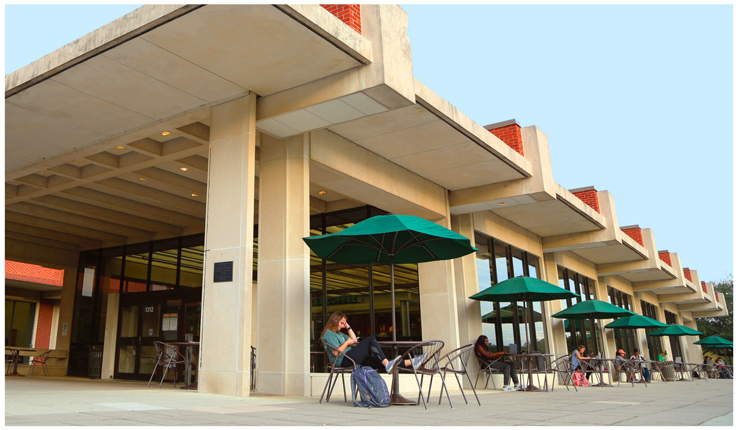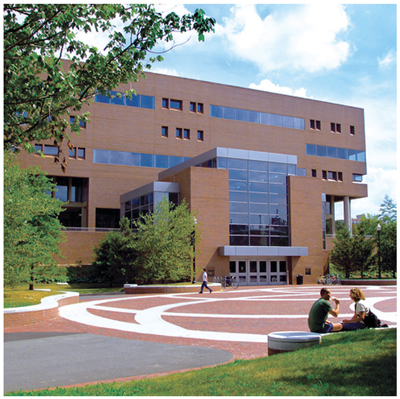Reopening Libraries: Campus Concerns
The COVID-19 pandemic abruptly shuttered academic libraries across the United States in March, leaving library staff scrambling to continue some semblance of library services. As states have taken steps toward reopening, academic institutions are now looking toward the fall semester and considering how they might safely open their own facilities.
|
|
College and university libraries face unique challenges as institutions begin reopening this fall.
The COVID-19 pandemic abruptly shuttered academic libraries across the United States in March, leaving library staff scrambling to continue some semblance of library services. For months, academic libraries have provided some amount of reference, document delivery, and other vital functions to help faculty and students function for the remainder of the semester. As states have taken steps toward reopening, academic institutions are now looking toward the fall semester and considering how they might safely open their own facilities.
Reopening processes remain in the very preliminary stages, as information on the pandemic changes day to day. Orders from national and local governments will necessarily inform any steps toward reopening, and libraries are also subject to the policies of their parent academic institution’s administration. Some academic institutions, for example, are planning abbreviated in-person semesters, while others are developing hybrid online/in-person instruction, and others plan to stay fully remote.
“We need to take our cues from the university as a whole,” says Emily Clasper, director of service strategies at the University of Rochester’s River Campus Libraries. “When there is an OK at the state level and at the city level, that we are able to reopen things, we have to go by what the university says is OK.” At this point in planning, Clasper says, all decisions are “a kind of educated guess” as to what will be permitted and prioritized by the broader institution.
PRINCIPLES AND PRIORITIES
For the University of Connecticut libraries, a list of “guiding principles” has shaped reopening plans, with the safety, health, and well-being of everyone—faculty, students, and library staff—as the top priority. This demands caution every step of the way, and an acknowledgement that even as libraries reopen and students return to campus, nothing will be business as usual. Lauren Slingluff, associate dean for the UConn Library, said that many librarians are “feeling the need to justify their existence by being helpful. We are used to being a profession that jumps in when there’s an emergency.” It is important, she says, to “get people to understand [that] if we can’t provide a service safely, we cannot provide that service. We cannot compromise safety and well-being so that people can get books.”
As major hubs for the social and intellectual life of a university campus, libraries face unique reopening challenges. Library leaders will need to determine to what extent—if at all—they can safely remain centers of campus life. According to Matthew Shaw, dean of University Libraries at Ball State University (BSU) in Indiana, where some campus activities will resume in July, “collaborative space and technologies are a hallmark of the user experience at the University Libraries, and one of the primary challenges will be to reimagine use and access in the context of new protocols for social distancing, sanitization, and safety.”
 |
TOGETHER YET APART Furniture placement at Baylor University’s Moody Memorial Library ensures the proper distance between users. Photo © 2017 Baylor University |
Clasper says that when library spaces reopen at the University of Rochester, it will not be all at once. “We would open space by space,” she says, and notes that the library is considering options for removing furniture and otherwise rearranging spaces to promote social distancing and discourage congregating.
Many academic libraries are also planning to reduce library hours, sometimes due to reduced staffing resources because of furloughs or the inability to hire student workers. Libraries are also developing ideas to limit the number of people in the library at any given time, including reservation systems for seating, and removing chairs or closing spaces like study rooms and computer labs. At UConn, the plan for reopening physical spaces means opening for low-contact or no-contact services that cannot be digitized—like loaning print books through curbside pickup—and not for gathering or group study. “We have a giant building,” says Slingluff, acknowledging that “libraries are primarily a space for gathering. We’re not sure that’s something we are going to be able to provide in the fall. We have too many solid surfaces” that would require frequent sanitizing.
NEW PROTOCOLS
Carl Flynn, director of marketing and communications for University Libraries at Baylor University in Texas, tells LJ of plans to reopen the library as a study space, with some modification. These include removing furniture in study spaces, providing cleaning supplies for public computing facilities, and putting up signs reminding people to wash their hands and wear masks. The university is also increasing cleaning frequency and the capacity and filtration of its HVAC systems.
The biggest concerns, according to Flynn and the library leadership team, “are around the safety of our students, faculty, staff, and other visitors as we reopen. Will people wear masks as instructed? Will they maintain adequate social distancing even if we set up our spaces according to suggested standards? Will our housekeeping crews, staff, and patrons be able to maintain a clean environment that will prevent viral spread?”
Social distancing has become a way of life around the world, and physical library spaces will need to be adjusted to keep staff and patrons safe. Universities are considering cleaning protocols and how to make sanitizing wipes and hand sanitizer widely available. At BSU, according to Shaw, a Taskforce on Recovery and the University’s Strategic Transition has created a safety plan that “includes distribution of acrylic sheet barriers in areas where employees frequently speak face-to-face with others.”
 |
SAFE PRACTICES UConn’s Homer Babbidge Library will limit occupancy and institute low- or no-contact services. Photo courtesy of University of Connecticut |
Even as some library staff return to work, many libraries will keep some portion of staff remote to limit the number of people in the building at any given time. At Baylor, where some library personnel will return in the first half of June, the library leadership “assessed our work areas and made adjustments in a few areas in order to meet social distancing standards,” says Flynn. “In some areas, personnel will adjust their work schedules to reduce exposure.”
PRINT AND DIGITAL
While libraries have been relying upon electronic databases and ebooks, reopening means considering how to circulate print collections. At BSU, “all returned materials are quarantined before reshelving or recirculating, and protocols are in place for processing interlibrary loan items,” Shaw says. At Baylor, “since the outbreak began, we have been quarantining mail and returned materials for seven days before distribution or shelving. This practice will continue once we reopen, although we may shorten the quarantine period based on CDC guidelines,” says Flynn.
Libraries are also considering contactless book checkout stations or apps to reduce contact with circulation staff or closing stacks and circulating print books through paging and low-contact delivery. In addition, libraries have continued to assess their digital collections, expanding electronic content where budgets allow. For content that is not available digitally, libraries may have to get creative with interlibrary loans or new methods of digital lending.
Academic reference librarians support student and faculty scholarship, frequently from a public reference desk. Virtual reference services—through chat, email, and telephone—have taken the place of face-to-face interactions since March and will likely remain the norm at many academic libraries for the foreseeable future. Librarians have used platforms such as Zoom to teach reference classes, and online instruction will continue to be important through the next academic year. As reference services lend themselves to remote communication in a way that other library services, such as print circulation, do not, it may not be a priority for libraries to return to traditional in-person reference work.
OFF CAMPUS
If academic campuses reopen this fall, not all community members will be able to return immediately. Many schools enroll a substantial number of international students, who may be unwilling or unable to return to the United States right away. In addition, some students or faculty may not yet feel safe returning to campus, due to health conditions that may make them or those who live with them more vulnerable to illness. Libraries will need to maintain digital services, like remote reference and ebook collections, that have served their communities since March. Some libraries are also considering delivering some print materials by mail.
As libraries assess best practices for reopening, colleagues at other institutions are their best resources for guidance and support. Discussions of reopening plans have been a focus of regional library consortia message boards and virtual meetings. Clasper notes that her team is “doing a lot of information gathering, reaching out to other institutions to see what their plans are.” Also, she says, “there’s a lot we can learn from talking to colleagues in the public libraries,” which are under great pressure to resume operations, and are slightly ahead of academic libraries on the reopening time line.
This pandemic can change quickly and unexpectedly. Slingluff recommends thinking about reopening in “phases” to mitigate frustration over the lack of a time line, articulating what each phase of reopening looks like and what it will take to move forward. “The progress from one phase to another isn’t driven by me,” she says, “it’s fully driven by the spread and contagion of the coronavirus.”
Jennifer A. Dixon is Collection Management Librarian, Maloney Library, Fordham University School of Law, New York.
RELATED
ALREADY A SUBSCRIBER? LOG IN
We are currently offering this content for free. Sign up now to activate your personal profile, where you can save articles for future viewing










Add Comment :-
Comment Policy:
Comment should not be empty !!!
Dickson Yumba
Great piece of work, I have gleaned ideas which we can apply in this part of the world despite our libraries being many years behind.
Posted : Jul 08, 2020 02:21